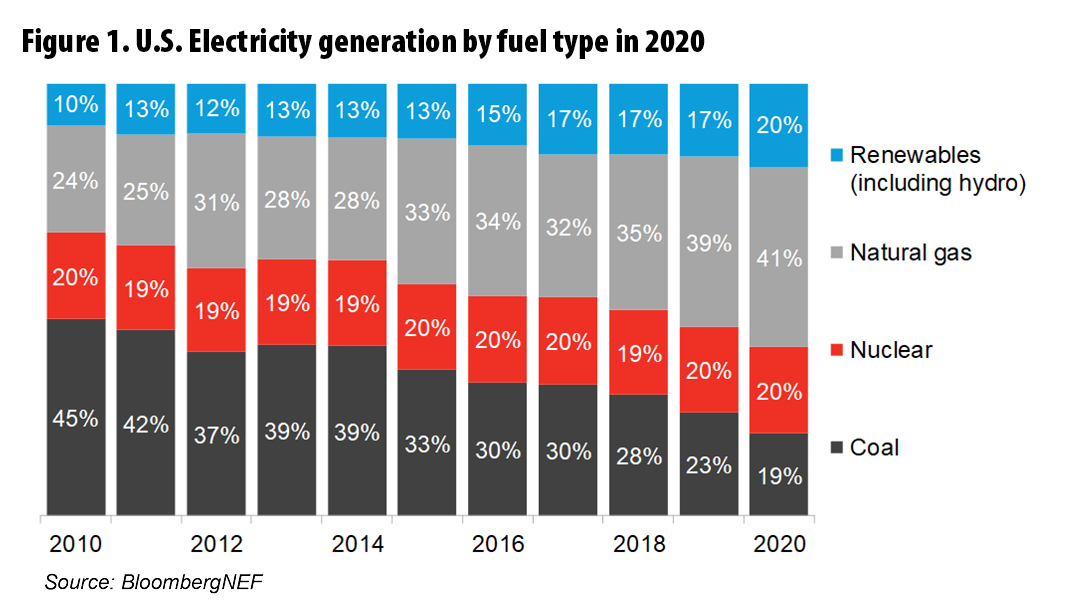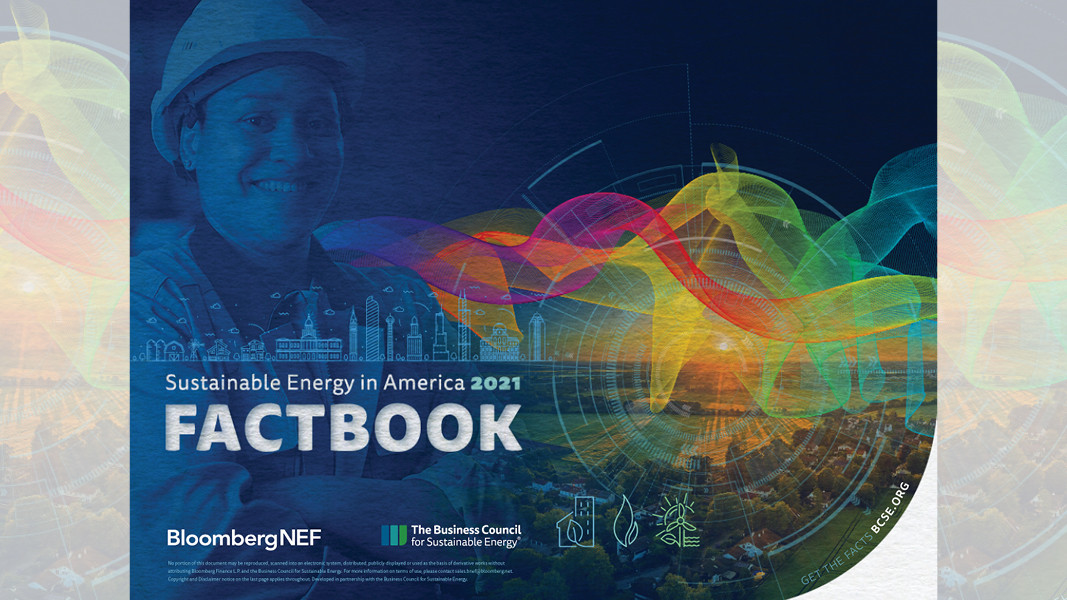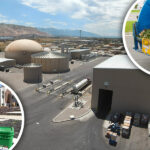BloombergNEF (BNEF) and the Business Council for Sustainable Energy (BCSE) released the ninth edition of their annual joint report, the Sustainable Energy in America Factbook. The 2021 Factbook provides a comprehensive overview of the American energy marketplace, including energy efficiency, natural gas and renewable energy. Faced with COVID-19 pandemic and sharp economic contraction, the U.S. clean energy sectors showed strong resilience in 2020, continuing a decade-long growth trend, summarizes the Factbook. The economic disruption caused a 9% drop in national greenhouse gas emissions driven by the declines of energy-related emissions by 10% and transportation-related emissions by 14%. “This fall in emissions is the most significant on record and puts the United States on track to meet its 2025 Paris Agreement commitment, though energy demand and emissions are expected to rebound with widespread vaccinations in 2021,” states a BNEF/BCSE press release.
 In 2020, the U.S. generation mix continued its progress toward clean energy. Natural gas and renewable energy together accounted for 61% of all electricity generation, up from 38% in 2011. Renewables’ contribution to the power grid set another record, rising 11% over 2019 levels, generating one-fifth of U.S. power in 2020. Natural gas is the largest source of power in the U.S., contributing 41% of the electricity mix and producing 1,641 terrawatthours, up 2.9% over 2019. Investment in natural gas infrastructure grew to $601 million in 2019, including $282 million on transmission systems and $258 million on distribution systems. Of interest to the biogas sector, the 2021 Factbook reports that renewable natural gas (RNG) production capacity grew 8% in 2020, and its share of natural gas-powered vehicles jumped from 32% in 2018 to 34% in 2019. Additionally, at the close of 2020, 26 states had acted to promote the use of RNG for thermal heating in homes and businesses.
In 2020, the U.S. generation mix continued its progress toward clean energy. Natural gas and renewable energy together accounted for 61% of all electricity generation, up from 38% in 2011. Renewables’ contribution to the power grid set another record, rising 11% over 2019 levels, generating one-fifth of U.S. power in 2020. Natural gas is the largest source of power in the U.S., contributing 41% of the electricity mix and producing 1,641 terrawatthours, up 2.9% over 2019. Investment in natural gas infrastructure grew to $601 million in 2019, including $282 million on transmission systems and $258 million on distribution systems. Of interest to the biogas sector, the 2021 Factbook reports that renewable natural gas (RNG) production capacity grew 8% in 2020, and its share of natural gas-powered vehicles jumped from 32% in 2018 to 34% in 2019. Additionally, at the close of 2020, 26 states had acted to promote the use of RNG for thermal heating in homes and businesses.
A record 33.6 GW of wind and solar capacity was added to the grid in 2020. “In a year when so much went sideways, it was a blockbuster year for renewable energy build and for the first time, a record 40% of U.S. power consumed generated no carbon dioxide emissions,” notes Ethan Zindler, BNEF’s head of Americas. “Decarbonization of U.S. energy accelerated in 2020 and the benefits will be felt for years to come.” Adds Lisa Jacobson, BCSE President: “The continued growth of clean energy in the United States, in spite of the economic downturn and the challenges of the pandemic, demonstrates that the market for these technologies is maturing and the portfolio is highly resilient.”













